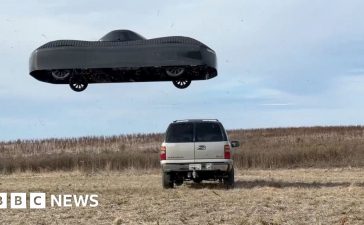What if Indiana Jones had been able to use artificial intelligence? With AI, Indy could have quickly analyzed ancient texts, deciphered hieroglyphics and cross-referenced historical data, speeding up his research and reducing the time spent in dusty libraries. He could have been much more efficient in his efforts to save the world.
Real life archaeologists aren’t saving the world, but they are trading their trusty tools for AI. And, in the process, they’re uncovering ancient trade routes, markets and systems of commerce.
AI is transforming the study of ancient economies, revealing new insights into how ancient societies conducted trade, made purchases and managed their finances. From pinpointing promising excavation sites to analyzing vast troves of artifacts and interpreting complex historical data, AI is changing the way archaeologists work. This technological shift saves time and resources and enables discoveries that might have been impossible with traditional methods alone.
“AI is revolutionizing archaeology by enabling data analysis, simulations and visualizations at scales and speed not previously possible and by providing endless variants and processing that can multiply the human capacity to understand and rethink the past,” Maurizio Forte, a professor at Duke University who studies AI and archaeology, told PYMNTS. “In a couple of recent articles, I defined the new AI idea of the past as ‘a multiverse’ because it really extends our capabilities to see the past in endless forms and multiple combinations, rather than in a utopian ‘objective/single’ perspective. In this case, the uncertainty of the interpretation is managed by different and multivocal perspectives: AI creates actually new dimensions of space and time.”
Ancient Supply Chains
AI is also revolutionizing the study of ancient trade networks. By analyzing data from various sources, including pottery distribution, inscriptions and ancient shipping records, AI can map out trade routes and economic connections that spanned continents. AI can analyze satellite imagery and geographical data to pinpoint likely sites of economic activity.
One example comes from the Roman Empire. Researchers at Stanford University used AI to analyze the distribution of amphorae, a type of container used for transporting goods like wine and olive oil. The AI model revealed intricate trade networks that connected different parts of the empire, highlighting the complexity and reach of Roman commerce. This analysis provided new insights into how goods were moved, traded and consumed across vast distances.
Bookkeeping on Clay
Researchers used AI to analyze thousands of cuneiform tablets from Mesopotamia. The clay tablets were inscribed with one of the earliest forms of writing. These tablets often contained records of transactions, loans and sales. By training AI to recognize patterns in these texts, researchers uncovered details about the credit systems and financial instruments used by ancient Mesopotamians. This included the use of promissory notes and complex loan agreements, illustrating a sophisticated economic system.
Deciphering the Unreadable
Another instance of AI application in archaeology involves the interpretation of scrolls from the 79 CE eruption of Mount Vesuvius, which covered the ancient cities of Pompeii and Herculaneum, along with their famous libraries, in deep ash. Unearthed centuries later by archaeologists, these scrolls were too fragile to be unrolled and read, potentially dooming their contents to obscurity. Nevertheless, the advent of AI has enabled scholars to work with computer programmers to unlock the secrets of these ancient texts.
The Vesuvius Challenge is a competition that uses AI to decipher 2,000-year-old scrolls buried in volcanic ash. The challenge was launched in March 2023 and is funded by technology investors and entrepreneurs, including Nat Friedman, the former CEO of GitHub, Daniel Gross and Elon Musk.
The winning team for 2023, consisting of Youssef Nader from Germany, Luke Farritor from the United States and Julian Schilliger from Switzerland, was announced Feb. 5. The trio, each with prior individual successes in the competition, joined forces to train machine-learning algorithms that successfully deciphered over 2,000 characters, surpassing the contest organizers’ estimated success rate of less than 30% for a smaller number of characters.
About 5% of the first scroll has been unrolled and read, revealing a unique text from antiquity that is not a duplicate of any known work. The philosophical manuscript focuses on Epicurean ideals where pleasure is deemed the highest good.
AI Deciphers Ancient Secrets
Forte explained that AI has been highly influential in remote sensing analysis and classification, detecting archaeological sites, and predictive modeling in recent years.
“AI algorithms were particularly successful in the automatic pattern recognition of large numbers of archaeological sites by satellite and aerial photos and by simulating ecosystems and large-scale social transformations across different societies,” he said.
Forte suggested that AI has the potential to serve as a guide for museum visitors, swiftly classify archaeological artifacts in real time during excavations, and generally redefine the traditional methods of study and publication.
“In short, we should expect a radical democratization of archaeological datasets, projects and publications in more collaborative-co-participative modalities and at a speed and accuracy never seen before,” he said.
However, Forte also cautioned about the ethical risks involved in the widespread adoption of AI in archaeology.
“AI will really reconnect much better past and present of our societies, involving also ethical risks we should seriously consider,” he warned.
For all PYMNTS AI coverage, subscribe to the daily AI Newsletter.












